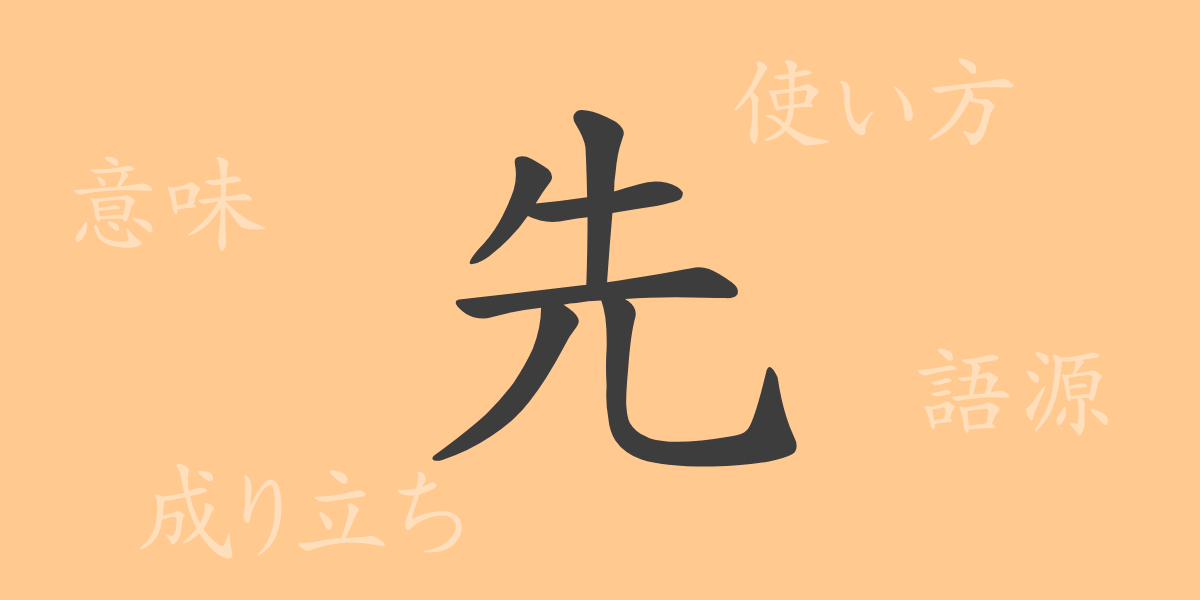Kanji, integral to the Japanese writing system, are a foundational element of Japanese culture, permeating everything from daily life to business contexts. This article focuses on the frequently used kanji “先” (セン), exploring its allure from its origins to its meanings, applications, and presence in idioms and proverbs, providing a comprehensive understanding of its significance.
Origins of 先 (セン)
The journey into the origins of the kanji “先” begins in ancient China. Initially a pictograph, this character represented ‘footsteps,’ symbolizing the ‘path ahead’ or ‘preceding.’ Over time, “先” evolved to represent both spatial and temporal ‘forwardness,’ indicating the direction or order one should follow.
Meaning and Usage of 先
The kanji “先” is versatile, with extensive usage across various contexts. Typically, it denotes ‘before’ or ‘ahead,’ referring to precedence in time or order. Depending on the context, it can also mean ‘to excel’ or ‘to pioneer.’ For instance, “先生” (せんせい) literally means ‘born before,’ evolving to refer to teachers or respected figures.
Readings, Stroke Count, and Radical of 先
Let’s look at the fundamental details of the kanji “先”:
- Readings: On’yomi “セン”; Kun’yomi “さき” (saki).
- Stroke Count: 6 strokes.
- Radical: 儿部 (ひとあし).
Idioms, Phrases, and Proverbs Using 先
Numerous idioms, phrases, and proverbs incorporate “先,” reflecting Japanese perspectives and values:
- 先導 (せんどう) – To lead others; also refers to the leader.
- 先送り (さきおくり) – To postpone matters.
- 先取り (さきどり) – To obtain something before others.
- 先見の明 (せんけんのめい) – The ability to foresee the future.
- 先手を打つ (せんてをうつ) – To act before someone else.
In proverbs, phrases like “先んずれば即ち人を制す”(さきんずればすなわちひとをせいす)emphasize the importance of taking initiative, illustrating that the first mover has the advantage.
Conclusion on 先
The kanji “先” not only reflects its etymological development and modern applications but also enriches Japanese with a wealth of idioms and proverbs. Understanding and appropriately using “先” can greatly enhance linguistic expression, making it a key element for enriching communication for both learners and native speakers of Japanese.

























